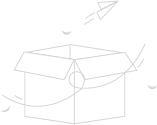-
Experimentation
普通类 -
- 支持
- 批判
- 提问
- 解释
- 补充
- 删除
-
-
Experimentation
This session is to introduce students to experiments and quasi-experiments. By presenting a number of experimental designs, this session offers insights into the understanding of experimental design, its advantages and disadvantage, and how to carry out experiments step by step.
Key Questions:
Why conduct experiments in real-world educational settings? And how to?
- When do we need to carry out an experiment?
- How to select variables, and measure the effects of independent variables on dependent variables?
- Are randomized controlled trial (RCT) the “gold standard” of research designs?
- Will quasi-experiments be good enough?
 session 7 Experimentation 20121.pptx
session 7 Experimentation 20121.pptxReadings:
Bryman, A (2008), Social Research Methods, Oxford University Press, Third Edition. Chapter14 (Quantitative Data Analysis)
Robson, C (2011). Real World Research. Wiley-Blackwell, Third Edition. Chapter 8 (Surveys and Questionnaires)
Johnson, B & Larry Christensen, L.B. (2010), Educational Research: Quantitative, Qualitative, and Mixed Approaches. Sage Publications, Fourth Edition. Chapter 9 (Experimental Research), Chapter 10 (Quasi-Experimental and Single-Case Designs) and Chapter11 (Nonexperimental Quantitative Research)
de Vaus, D. (2001). Research Design in Social Research. London: Sage. Chapters 4-6.
-
-
- 标签:
- chapter
- variables
- educational
- experimentation
- edition.
- quantitative
- experiments
- experimental
- designs
- quasi
- research
-



学习元评论 (0条)
聪明如你,不妨在这 发表你的看法与心得 ~